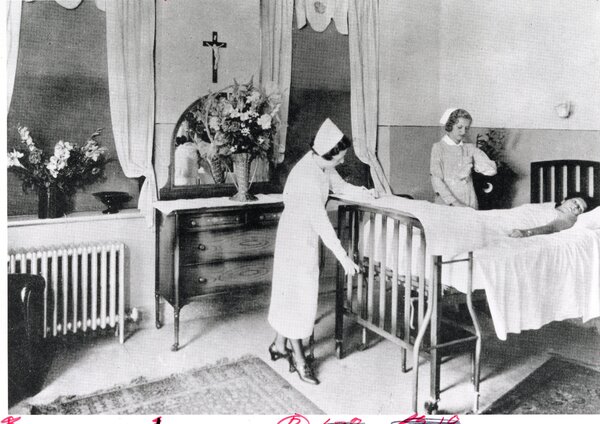The Loyola School of Nursing
Nursing education during the early 20th century primarily ocurred as part of three-year diploma programs located at hospital training schools. The quality of education at these schools varied. Most nursing training was on-the-job with very little structured education. Student nurses were expected to staff hospitals, with minimal supervision, often working 12 hour shifts as the only nursing staff on hospital wards. The 1923 publication "Nursing and Nursing Education in the United States" (known as the Goldmark Report) sought to end the exploitation of students and improve the quality of nursing education. Despite the report, progress in closing poor performing diploma schools and moving nursing education to universities was slow.
In Chicago, many diploma programs were located at the Catholic hospitals operated by religious orders. The Loyola Medical School, established in 1910, had arrangements with several Catholic hospitals for clinical care and the supervision of medical students. Some of these agreements included the provision of selected lectures and laboratory experiences by Loyola professors for student nurses. Nursing students in these Loyola affiliated programs completed three years of training at their hospital school of nursing, but received their Certificate of Graduate Nurse at Loyola University's graduation ceremonies.
In 1935 Loyola established a School of Nursing in cooperation with its six affiliated hospital training schools. The six hospitals - St. Bernard's, St. Anne's, St. Elizabeth's, St. Joseph's, Oak Park, and Columbus - were described in the school's original charter as units of the School of Nursing. Sister Helen Jarrell, RHSJ, the director of the St. Bernard's School of Nursing, a leader in the Catholic Hospital Association, and an advocate for improved nursing education, became Loyola's first director (and later dean) of the School of Nursing.
